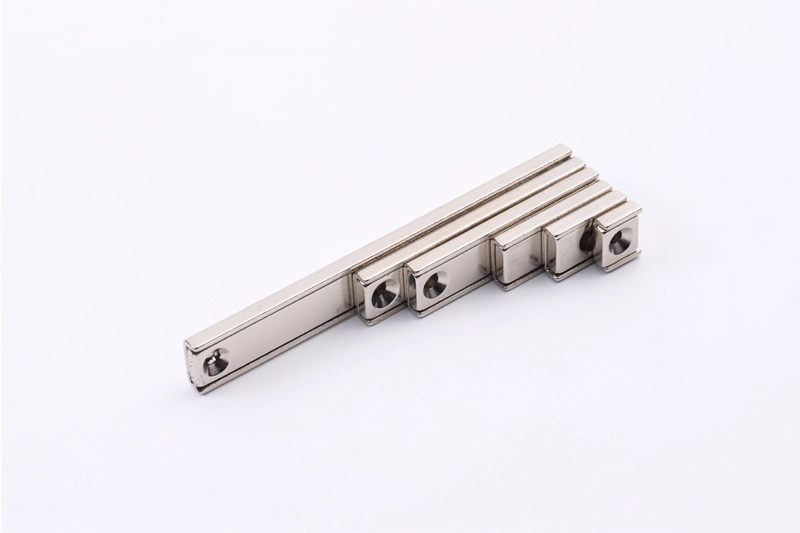Recently, many customers have been inquiring about motor magnets, and there are many aspects to consider, such as thickness, width, and chamfers. Today, we will introduce them to you.
When fixing the internal or external magnetic circuit ring, as the thickness increases and the air gap decreases, the effective magnetic flux increases. The obvious effect is that the no-load speed decreases, the no-load current decreases, and the maximum efficiency of the motor increases under the same residual magnetism.
However, there are also disadvantages. For example, the commutation vibration of the motor increases and the efficiency curve of the motor becomes relatively steep. Therefore, the thickness of the motor magnets should be as consistent as possible to reduce vibration.
For densely packed brushless motor magnets, the accumulated gap cannot be too large, it cannot be greater than 0.5mm. If it is too small, it will not be able to be installed. If it is too large, it will cause motor vibration and reduce efficiency. This is because the position of the Hall element used for measurement does not match the actual position of the motor magnets. It is necessary to ensure the consistency of the width, otherwise, the efficiency of the motor will be reduced, and the vibration will be large.
For brushed motors, there is a certain gap between the magnets, which is left for the transition area of mechanical commutation. Although there are gaps, most manufacturers have strict magnet installation procedures to ensure the accuracy of the motor magnets' installation position.
If it exceeds the width of the magnet, it cannot be installed. If the width of the magnet is too small, the positioning of the magnet will be incorrect, increasing motor vibration and reducing efficiency.
If chamfering is not performed, the magnetic field change rate at the edge of the motor magnetic field will be large, which will cause the motor to vibrate. The larger the chamfer, the smaller the vibration. However, chamfering usually produces a certain magnetic flux loss.
For some specifications, the magnetic flux loss when the chamfer is 0.8 is 0.5-1.5%. When the residual magnetism of a brushed motor is low, reducing the chamfer can compensate for the residual magnetism, but the motor's pulsating vibration will increase.
Usually, when the residual magnetism is low, the tolerance in the length direction can be appropriately increased to a certain extent to increase the effective magnetic flux, so that the motor performance is basically unchanged.
With years of industry knowledge accumulation and experience exploration, in 2013, the company introduced metal production equipment (steel cup/iron shell lathe, punch), and began to process and assemble magnetic parts and magnetic components. (Magnetic equipment is also called magnets/magnetic components, which are magnetic systems that apply magnetic circuit principles.) Until now, the company has dozens of advanced magnetic assembly-related parts processing equipment, machining magnetic assemblies, starting from the traditional steel cup (tank) magnet, expanding to rubber and plastic-coated magnets, and installing magnets. welcome to consult.

Related Article
Please fill the form to let us know your need. Our sales will get in touch with you ASAP.